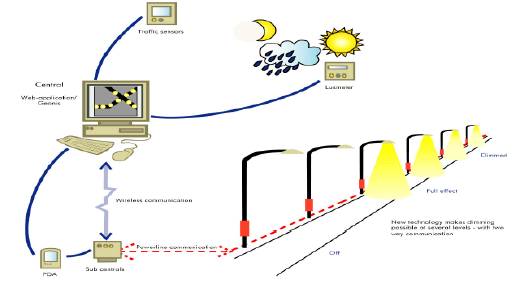In the tapestry of urban landscapes, street lights play a quintessential role. Beyond their functional purpose of providing illumination, these fixtures contribute to the aesthetic fabric of cities, shaping the ambiance and character of streets and public spaces.
However, the conventional approach to street lighting often overlooks its potential as a medium for artistic expression. In recent years, a growing number of cities worldwide have begun to explore innovative ways to leverage street light control as a canvas for artistic endeavors. This article delves into the evolving landscape of urban lighting, highlighting the intersection of technology, creativity, and community engagement in shaping vibrant, dynamic cityscapes.
The Evolution of Urban Lighting:
a. Historical Perspectives: From gas lamps to incandescent bulbs, the evolution of urban lighting reflects advancements in technology and urban planning.
b. Functional vs. Aesthetic Considerations: Balancing the need for visibility and safety with the desire to create inviting, visually appealing environments.
c. The Rise of LED Technology: Transforming the possibilities of urban lighting with its energy efficiency, versatility, and controllability.
Beyond Illumination: The Artistry of Light:
a. Light as a Medium: Exploring the expressive potential of light in urban environments, from subtle accents to immersive installations.
b. Light and Shadow: Leveraging contrast and shadow play to evoke mood and drama in urban spaces.
c. Dynamic Lighting: Embracing motion and interactivity to create engaging experiences for pedestrians and passersby.
The Role of Street Light Control Systems:
a. Smart Lighting Infrastructure: Harnessing IoT (Internet of Things) technologies to enable remote monitoring, adaptive dimming, and color-changing capabilities.
b. Programmable Control Interfaces: Empowering artists and designers to manipulate lighting parameters in real-time, facilitating dynamic and responsive installations.
c. Citizen Engagement: Fostering community involvement in the design and programming of public lighting initiatives, promoting a sense of ownership and identity.
Case Studies in Urban Light Art:
a. “Lighting the Night”: Examining cities at the forefront of light art movements, such as Amsterdam’s annual Light Festival and Lyon’s Fête des Lumières.
b. Temporary Installations: Highlighting the impact of temporary light art installations in activating underutilized urban spaces and fostering cultural exchange.
c. Permanent Installations: Showcasing iconic examples of permanent light art installations integrated into urban infrastructure, from bridges to public plazas.
Challenges and Opportunities:
a. Technical Considerations: Addressing the complexities of integrating artistic lighting installations with existing urban infrastructure and regulatory frameworks.
b. Sustainability: Balancing the aesthetic appeal of lighting installations with energy efficiency and environmental impact considerations.
c. Equity and Inclusion: Ensuring that light art initiatives reflect the diverse identities and experiences of urban communities, promoting accessibility and social cohesion.
The Future of Urban Lighting:
a. Collaborative Innovation: Encouraging interdisciplinary collaboration among artists, designers, technologists, and urban planners to push the boundaries of urban lighting design.
b. Adaptive Urban Environments: Envisioning dynamic Street Light Control systems that respond to environmental conditions, human activity, and cultural events in real-time.
c. Empowering Communities: Advocating for participatory approaches to urban lighting design that prioritize community input and engagement, fostering a sense of belonging and pride.
Conclusion:
As cities continue to evolve and expand, the role of street lighting extends beyond mere functionality to become a canvas for artistic expression and urban storytelling. By embracing innovative technologies and fostering collaboration across disciplines, cities can unlock the full potential of urban lighting as a catalyst for creativity, connectivity, and cultural vibrancy. In illuminating the urban canvas, we illuminate the soul of the city itself, weaving together the threads of past, present, and future in a tapestry of light and imagination.













